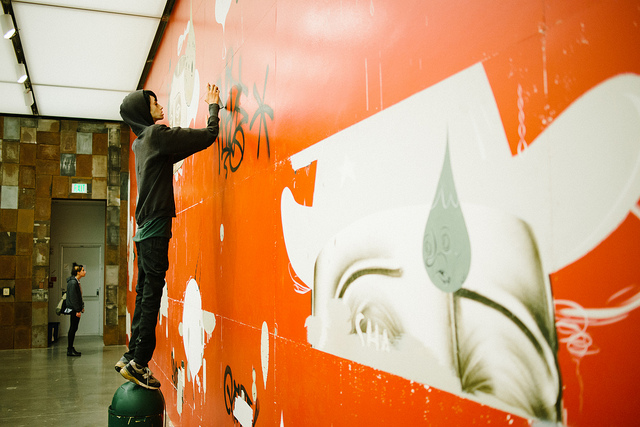
Earlier this month, I visited the Institute of Contemporary Art/Boston for the opening of Barry McGee, a retrospective of McGee’s work that had come to Boston after first being shown last summer in Berkley, California at the Berkeley Art Museum and Pacific Film Archive.
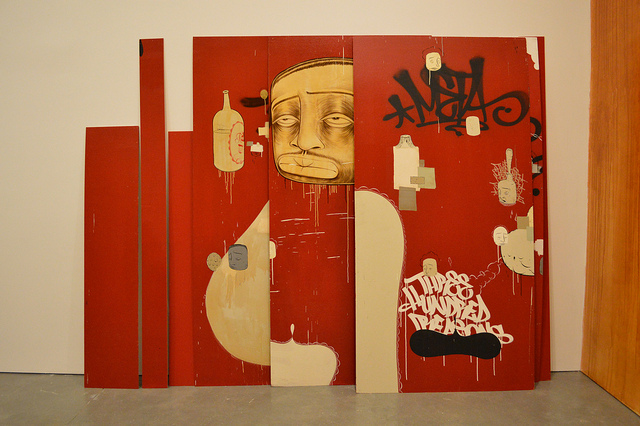
Barry McGee is a mid-career retrospective and the most extensive museum exhibition of McGee’s career to date. This version of Barry McGee is somewhat smaller than the version in Berkley, and so a few large works are not included, but this version also included a few pieces that were not seen at Berkley, more specifically work by Boston artists and graffiti writers and a bit of new work by McGee. Since the exhibition is a retrospective, Barry McGee includes sculptures, paintings, drawings, zines, ephemera, etchings and video works by McGee from the early 1990’s all the way through to 2012, although even the old work is not quite the same as it once was because McGee likes to rearrange his old work into new configurations and shapes whenever possible. In addition to work by McGee, there were artworks and ephemera by about a dozen other artists whom McGee included in the show. It is not quite an official part of the show, ICA adjunct curator Pedro Alonzo also arranged for McGee to paint a mural on the back of Boston’s House of Blues theater. Despite the title, the show seems to be an effort by McGee to take advantage of his position as a “museum-ready artist” by bringing the work of his friends into the museum galleries too and to highlight the significance of the kind of graffiti that many people find ugly and undesirable.
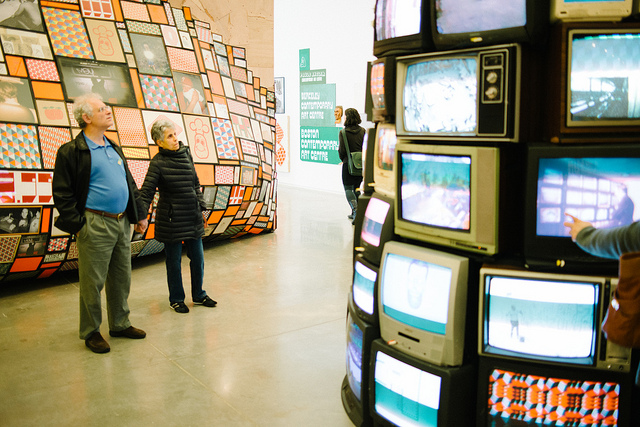
In Ben Valentine’s review on Hyperallergic of the Berkley version of Barry McGee, Valentine completely missed the mark and misunderstood McGee’s work and what was going on in the show. Valentine repeatedly refers to McGee as a “street artist” or his work as “street art”, a mistake that was made in some of the Boston press as well, perhaps because street artist is a more institutionally acceptable term than the much more accurate “graffiti artist” or “graffiti writer”. Valentine also claimed that there were sculptures all around the show of McGee tagging walls, and suggested that this might be some sort of mid-life crisis/street-cred proving move by McGee to show that he is still authentic. In fact, practically the opposite is true. Those sculptures actually depict McGee’s assistant Josh Lozcano and help to point out that McGee is older and that he is not longer as directly as involved in the culture he grew up in as he might like to be, whereas Lozcano is from a slightly younger generation and continued on as an active and accomplished writer long after McGee went into his current stage of semi-retirement.
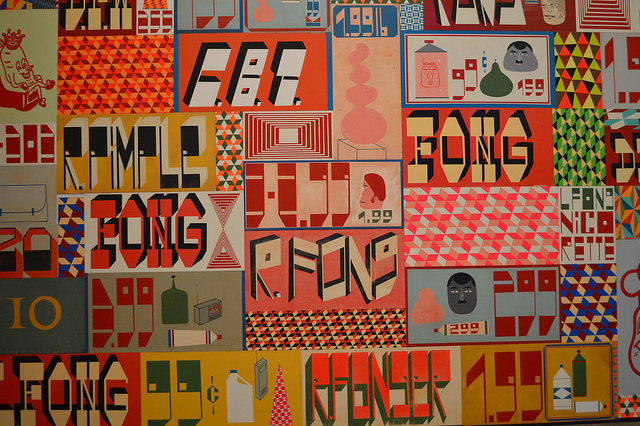
Similarly, at the opening at the ICA I heard multiple people asking docents what the letters “THR,” “CBT,” or “DFW” stood for or meant (the letters appear throughout much of the work in the show). The docents were either unable to answer or radioed in to their superiors and then explained that the letters were acronyms for “The Human Race” and “Down For Whatever,” but the significance of the letters is much more important than the meaning. DFW, CBT, and THR are graffiti crews that McGee is affiliated with. McGee is repping his crews in his own way, now that he has the attention of museum-goes and does not have the freedom to go out writing graffiti as much as he once did. Of course volunteer docents cannot be expected to know everything about every exhibition, but if McGee’s show has meaning beyond “these are some cool drawings I did,” it has to do with graffiti’s relationship to the museum and the community spirit of graffiti versus the one-man genius model of the museum.
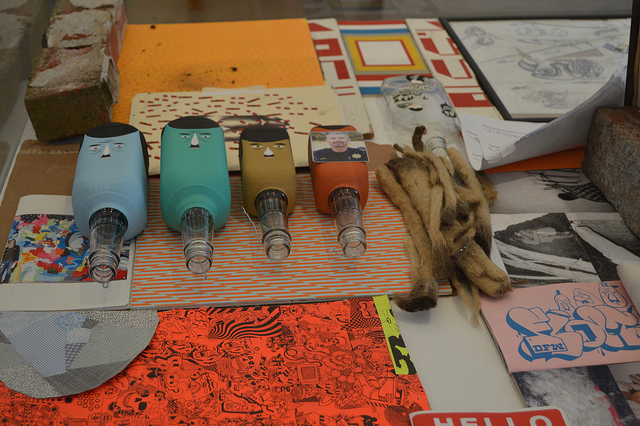
McGee is subversive to a point that he probably gets in his own way sometimes. He is clearly uncomfortable in galleries and museums, even though he has exhibited his work indoors for about two decades. This discomfort about and subversion of museum norms is the hidden theme of the show, which McGee successfully sneaks into the museum.
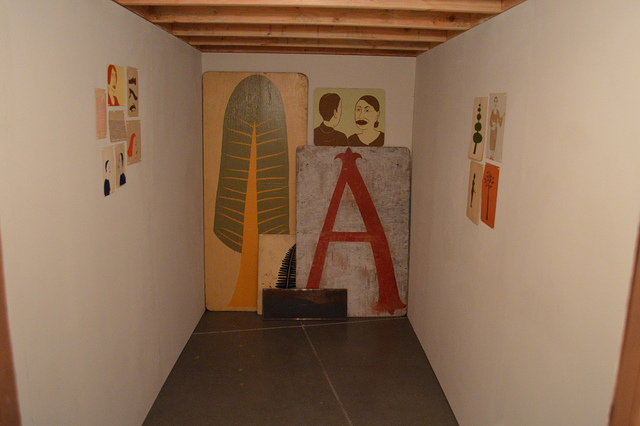
The elements of Barry McGee that McGee himself made sure were included, and a few pieces that may have been added by curators but which it seems likely McGee had a good amount of say in including, point towards his attempts to subvert the museum and their model of a one-man retrospective even when it is about his own work. The show includes the work of at least a dozen other artists, and, in a video tour of the exhibition by curator Jenelle Porter, Porter points out that McGee’s video installation is made up of animations and video clips created and organized by McGee’s assistant Lozcano. Some of the other artists whose work can be found in the show include McGee’s late wife Margaret Kilgallen, his father Jon McGee, Craig “KR” Costello, more than half a dozen freight train moniker writers, and Rize (a prominent Boston-based graffiti writer in the early to mid 1990’s and the subject of a photograph which has appeared repeatedly in McGee’s work since the mid-1990’s). McGee even devoted an entire room of the exhibition to showing his work alongside the work his friends and legendary Boston graffiti writers who would otherwise not have had the opportunity to show inside the ICA. Lozcano’s chaotic tower videos and animations also include clips of other graffiti writers at work next to animations of McGee’s drawings, and at this point it becomes hard to say anymore exactly how many of McGee’s colleagues are represented in the show because there are dozens of video clips with fast cuts that all seem to melt together in the massive installation. Some would say that graffiti is about ego, and that can certainly be said of the upper-echelons of the art world, but McGee broke the stereotypes to subvert the museum and turn his supposed one-man retrospective into a celebration of many artists and mark-makers.
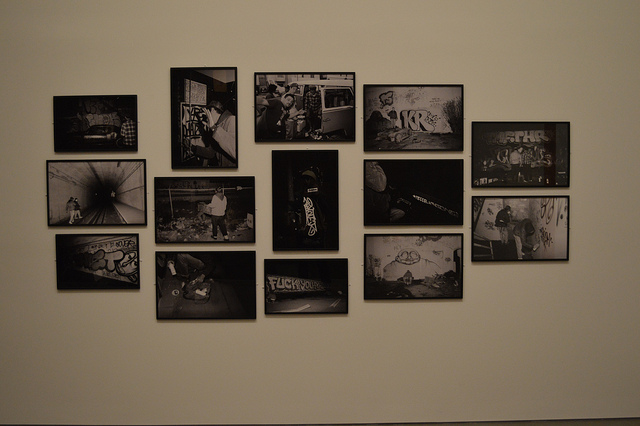
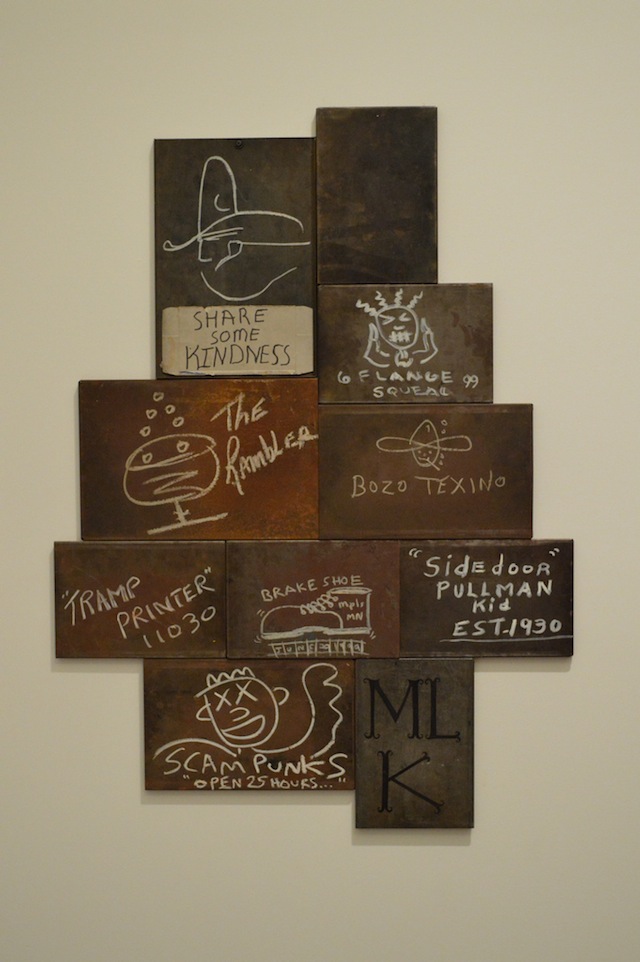
Outdoors, the trend of subversion of norms and inclusion/celebration of graffiti culture and community continues. Rather than putting his name (TWIST) on the wall on behind Boston’s House of Blues, we get Lozcano’s name (AMAZE) in huge letters next to an almost equally massive OKER tribute piece (OKER is currently serving time in prison in the UK for graffiti, and has painted with Lozcano and McGee before). McGee put up the names of people who would better fit the wall, since the wall can be seen from the highway coming into Boston, and there is plenty of illegal graffiti to see nearby along the highway. And the names were put up so that they resembled graffiti except on a massive scale and with permission, subverting the traditional expectation that a mural should look nothing like graffiti, or even cover it up. Murals like this are nothing new for McGee, but I am still explaining it in detail because it was one more subversive move to highlight more authentic graffiti and shine a light on a couple of the deserving artists whom the ICA would otherwise ignore or not be aware of at all.
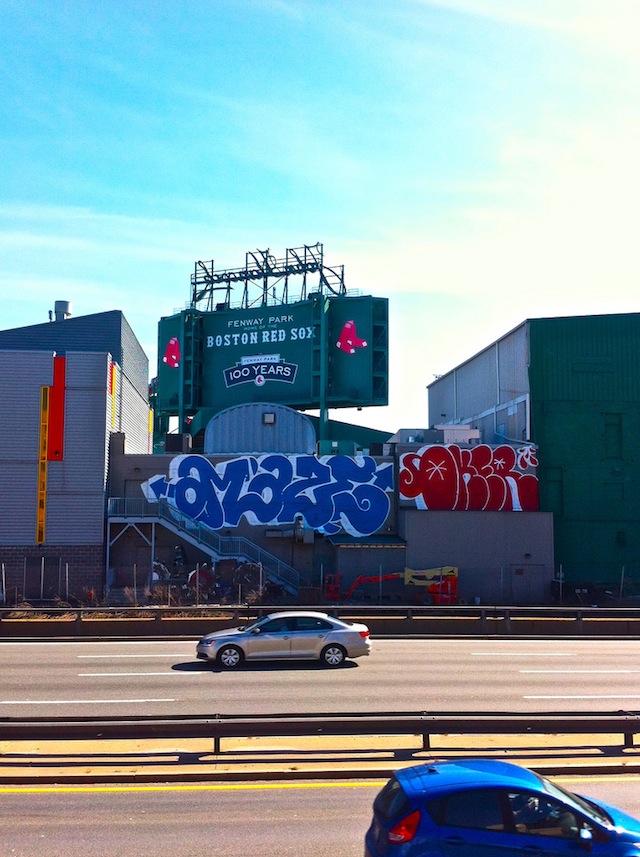
So is McGee successful in his efforts? Yes and no. He is successful in bringing those close to him into the museum along with him, but what is less clear is whether or not anyone has noticed. Given Valentine’s review of Barry McGee in Berkley and questions by visitors that went unanswered or poorly answered, it seems that McGee has only succeeded half way. Has anyone who was not already in on it has noticed his subversion? If you do not already know what DFW and THR mean, you probably are not going to discover their meaning by staring at one of McGee’s paintings. On the other hand, those who have been included seem happy, and the irony of OKER’s name being included in such a respectful way on a legal wall while he sits in prison for illegal graffiti is likely to be appreciated by the graffiti community. So maybe McGee’s subversion is a sort of secret subversion. For those who know, the show is bit of a coup. For those who do not know, things are business as usual, and that’s fine.
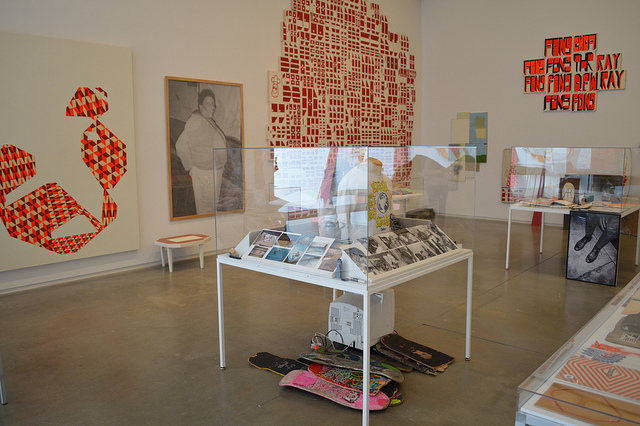
Barry McGee is the ICA/Boston’s fourth time bringing someone from the street art or graffiti world into their museum, and of the other attempts I have seen (with the work of Os Gemeos and Swoon) it is the most successful. Barry McGee is full of strong work, it provides a good introduction to McGee without being repetitive, and McGee still manages to let his true self shine through by subverting the museum’s goals somewhat and turning the show into a show about real graffiti and community, if you are in the know. At the same time, I fear that the ICA has missed the point of their own show and failed to see McGee’s true brilliance, so the success seems somewhat accidental.
For more photographs of the show, check out Brooklyn Street Art (who seem to agree that this show is really about community) and Arrested Motion.
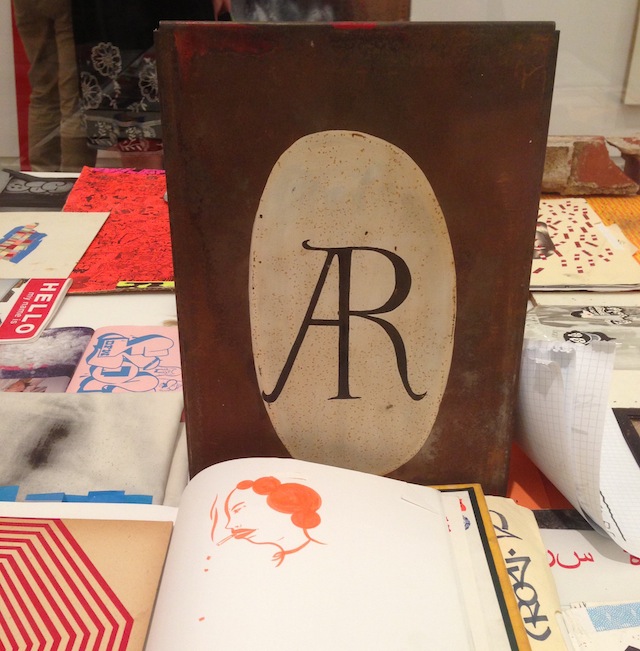
Photos by Pat Falco, Chase Elliot Clark, SRIMA, and RJ Rushmore
